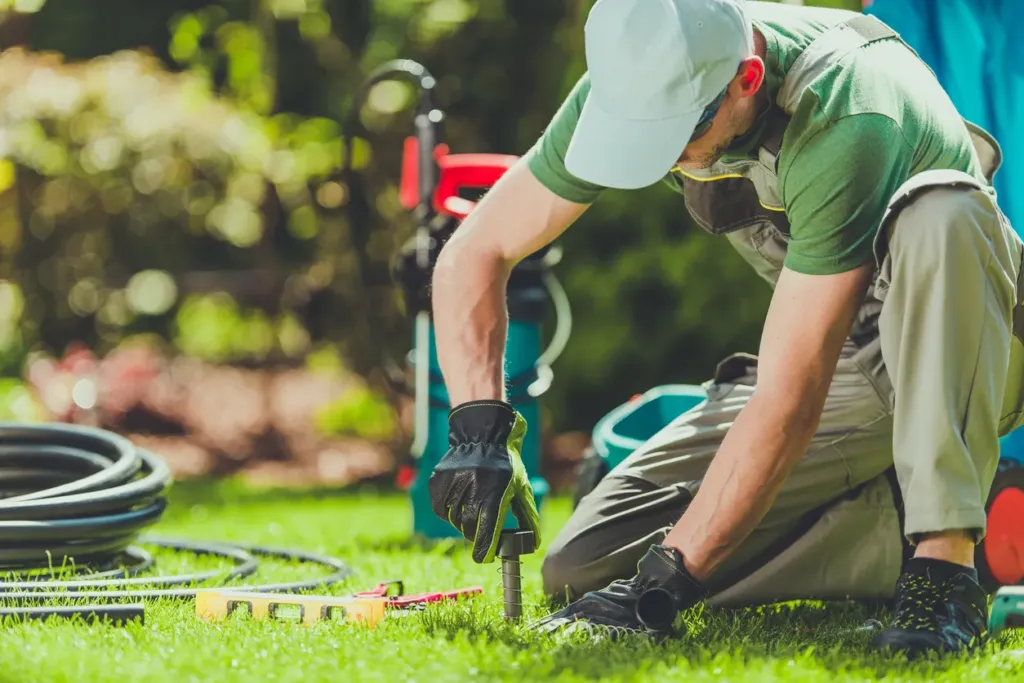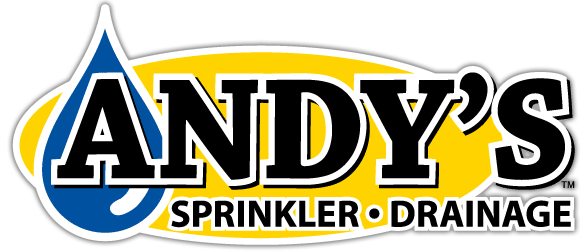
How to Tell Whether Your Sprinkler Valve Solenoid Is Bad
Updated on Sept. 15, 2025
When a sprinkler system works, it can make lawn care easier, leaving you with a greener and healthier lawn. But when they stop working, they can be a source of unlimited frustration. The best way to prevent that frustration is to know how to spot signs of trouble early. Once you can spot the signs, give the best in the business a call for all your sprinkler repair and maintenance needs, Andy’s Sprinkler, Drainage, & Lighting.
Signs You Have a Problem
The solenoid is what controls the water pressure. It receives an electric current from the controller to determine what adjustments need to be made. It uses a plunger to adjust the valve, and there are a few more moving parts in the mix. All of this is what allows an automated sprinkler system to run things for you and provide that great convenience. But when the solenoid is bad, you can get some weird sprinkler problems, such as the water won’t shut off.
What Is a Sprinkler Valve Solenoid & How It Works
A sprinkler valve solenoid acts like the “messenger” between your irrigation controller and the water that flows through your system. When the controller sends an electric signal, the solenoid responds by lifting or lowering a small plunger that opens or closes the valve. This process regulates the water pressure and directs it to the sprinkler heads across your yard. Most residential systems use either normally open (NO) or normally closed (NC) solenoids, while larger or more complex setups may involve 2-way or 3-way designs. Regardless of type, the solenoid’s role is simple but vital: without it, your sprinkler system cannot manage water automatically.
The Water Won’t Shut Off
If you have this problem, it’s very likely the solenoid. A problem with the plunger can prevent the solenoid from closing the valve when it’s time. That means your sprinklers will keep running after they’re supposed to stop.
If you run into this problem, the first step is to turn off the water. If you can’t get it off at a local source, you can shut it off at the main. Once you get the water shut off, call the licensed professionals at Andy’s Sprinkler, Drainage & Lighting!
Other Common Solenoid Problems
In addition to sprinklers that won’t turn off, there are a few other issues a bad solenoid can cause:
• The valve won’t open at all, often due to a wiring problem or a plunger stuck in place.
• The valve feels hot to the touch, which can point to an electrical short.
• Repeated clicking noises, where the plunger is trying but failing to engage properly.
• Sediment buildup inside the valve that keeps water from flowing smoothly.
Some of these can be minor, while others may point to bigger electrical or mechanical issues. If you notice them, it’s smart to have a professional look before the damage spreads further.
Low or Uneven Water Pressure
The solenoid controls the water pressure. Knowing that, it’s not surprising that a bad solenoid can lead to water pressure issues. If your system isn’t delivering water to every corner of the lawn like it once did, the solenoid is one of the most likely culprits. While this issue is not an emergency, we highly suggest you give Andy’s a call at your earliest convenience and one of our licensed professionals can fix it for you.
Water Leaks
There are many points in a sprinkler system that can leak. No matter the cause, leaks should never be ignored. They can run up a monstrous water bill and cause additional damage. So, if you see a leak, call Andy’s Sprinkler, Drainage & Lighting immediately!
As far as the solenoid goes, it’s the main valve for the automated sprinkler system. It’s definitely a common place for leaks to occur.
Diagnosing the Solenoid
When we come to repair your sprinkler system, we’ll do a full diagnosis during our sprinkler system checkup. That’s part of the deal. Assuming the solenoid is the problem, these are some of the things we’re likely to do to identify and resolve the issue.
DIY Troubleshooting Checklist
Before our team arrives, there are a couple of easy checks you can try on your own:
• Use a multimeter to test for voltage or continuity at the solenoid wires.
• Look at the diaphragm and plunger for signs of dirt, sediment, or small blockages.
• Rinse the solenoid gently to clear out any debris that may be preventing it from sealing.
These steps can sometimes resolve the problem. If they don’t, that’s when Andy’s licensed professionals can step in with advanced testing and repair.
Current Testing
Sometimes the electric signal is the problem. We’ll check the current and resistance to make sure the circuitry is working as it should. When the problems are related to circuitry, we can find and replace the faulty part. Often a small part of the whole is the culprit, and the repair isn’t too troubling. That said, larger electrical problems can be an issue. Whatever the problem may be, Andy’s can handle it!
Valve Inspection
If the problem isn’t electrical, it’s mechanical. The best way for us to rapidly diagnose mechanical issues in the solenoid is to take a good look at the valve. Sometimes the problem is apparent, and we can get straight to it. In other cases, we might need to disassemble, clean, and inspect the inner components of the solenoid. This will give us a close look at everything and help us find the faulty part.
Parts Replacement
When we take apart the solenoid valve, we’re going to look over each individual component. That will help us identify the ultimate root cause. Once we know where the fault lies, we can replace the component and get your sprinkler system working again. In a worst-case scenario, it could be an irreplaceable part of the solenoid, such as the housing, meaning we might have to replace the entire solenoid instead of a smaller component.
Repair vs. Replace – What You Should Know
Homeowners often wonder if they should repair a solenoid or replace it entirely. Most solenoid parts cost between $30 and $150, depending on brand and system type. Labor costs vary depending on how complex your system is. If just one part inside the solenoid is damaged, repair can be simple and affordable. But if the valve housing or multiple pieces are worn out, replacing the whole solenoid often makes more sense. DIY replacement is possible, but most people find it easier and faster to let a pro handle the job.
Preventive Maintenance for Solenoids
To help your sprinkler system run smoothly for years, a little preventive care goes a long way:
• Install filters to reduce sediment buildup.
• Use surge protection to guard against electrical burnout.
• Keep water pressure within the recommended range to avoid strain.
• Winterize your sprinkler system before freezing temperatures arrive.
• Have your system inspected once a year to catch small problems early.
FAQs About Skipped Sprinkler Zones
-
Why won’t my sprinkler shut off?
It’s usually a stuck solenoid plunger or an electrical fault. Shut off the main water supply and call Andy’s for service.
-
How much does it cost to replace a solenoid?
On average, the part runs between $30 and $150. Labor depends on your system setup.
-
Can I clean a sprinkler solenoid myself?
Yes. Removing debris from the plunger and diaphragm can sometimes solve minor issues. If the problem continues, it’s time for a professional repair.
-
How long do solenoids last?
With proper maintenance, most solenoids last between seven and ten years.
Huntsville
273 Production Ave
Madison, AL 35758
